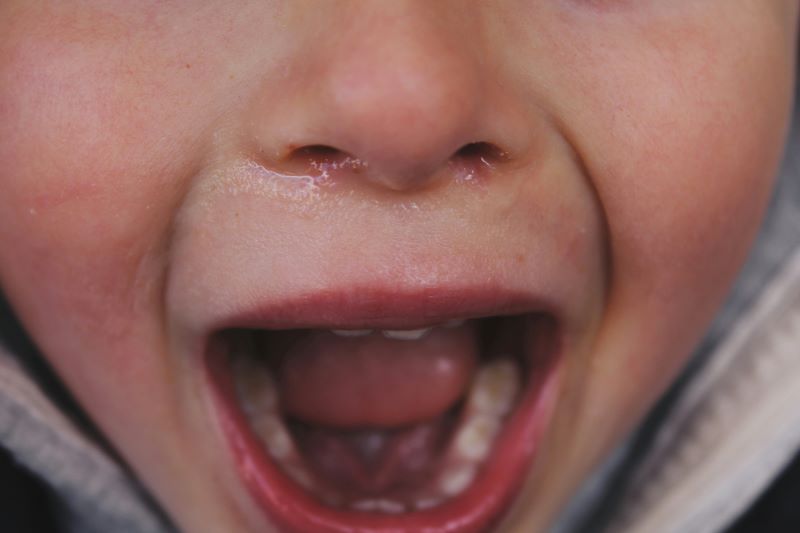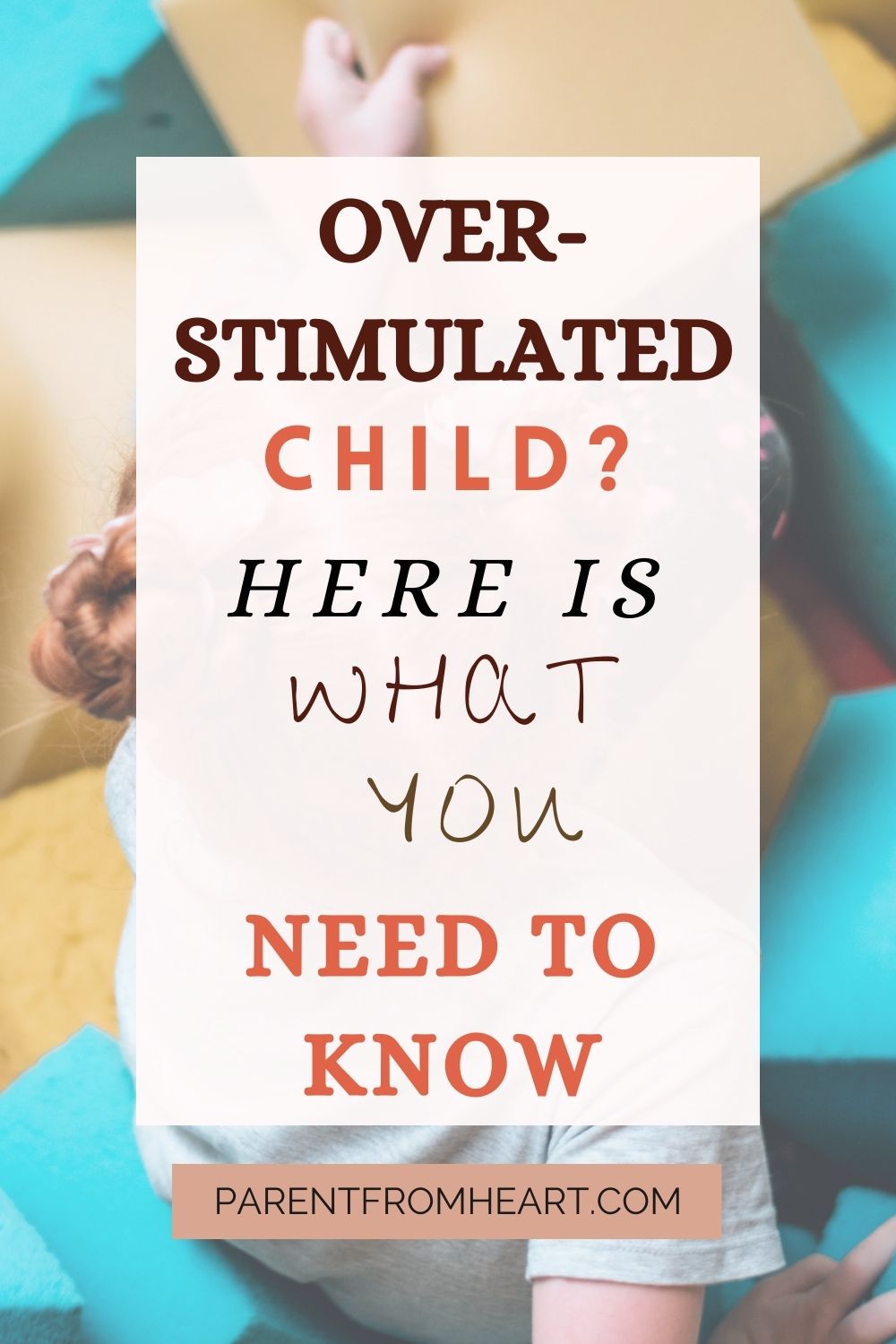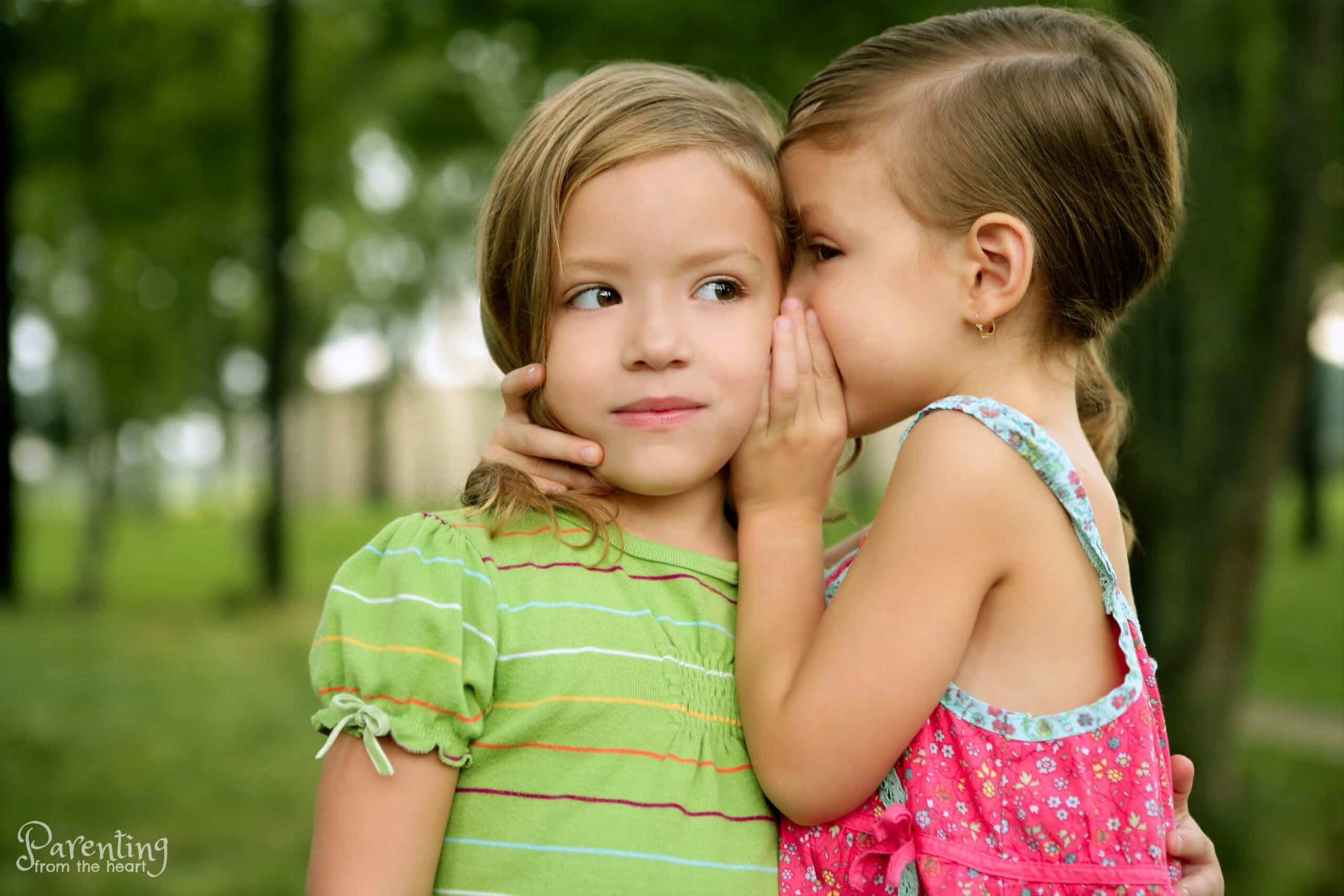Table of Contents
Kids get overstimulated when their brains receive more sensory input than they can process. Overstimulation looks different for some kids, making it a complex and sometimes overwhelming issue for parents to deal with.
I have a son who was easily overstimulated as a baby and still struggles with certain sensory stimuli as a 7-year-old. I didn’t know it was overstimulation at the time, and his constant crying and poor sleep just added to my mom guilt.
But it doesn’t have to be that way for you. We will explain what overstimulation is, what it looks like, and how to handle it. As importantly, though, we will explore overstimulation in parents. The impact of sensory overload on your parenting is significant, and you probably aren’t aware it’s happening.
What Is Overstimulation?
Overstimulation happens when your child is overwhelmed by experiences and situations that provide their senses with an overload of information.
Sensory overload in kids happens when one or more of their senses become overstimulated. Kids are incredibly observant, and their brains try to learn as much as possible from the world around them. The senses relay information to the brain, where the brain interprets it and decides on a response.
But sometimes, their young brains are hit with too much information to handle at one time. When the brain is overloaded, it feels overwhelmed and panicked, sending the body into fight-or-flight mode. Some kids are more sensitive to external stimuli than others.
The general symptoms of overstimulation are:
- Anxiety
- Irritability
- Trouble focusing
- Sensitivity to touch, textures, and sounds
- Emotional outbursts
What Causes Overstimulation?

Overstimulation can be individual, and what overwhelms one child might not affect another. But there are a few things that can lead to overwhelm and overstimulation in kids.
Screentime
Screens can overstimulate the developing brain of young kids. The blue light is stimulating, not to mention the constant sights, sounds, moving images, and quickly changing ideas and concepts.
The trouble with screens and technology today is that there are so many different forms. You might not think your child uses screens too much, but if you look at their combined screen time across devices, it’s easy to see how overstimulation happens.
How could your child be using screens every day?
- Kindle
- TV
- Web surfing
- Gaming
- Social media
- Messaging
- Educational purposes
- Art programs like Adobe or Procreate
Psychiatrist Victoria L. Dunckley, M.D. has a quiz for something she calls Electronic Screen Syndrome. The quiz can help parents see the not-so-obvious ways screen time may affect their kids.
You can find the quiz here.
School and Extra-Curriculars
Extracurricular activities and school are hubs of activity that can be too much for some kids to handle.
School can take its toll because kids need to:
- Self-regulate
- Focus
- Deal with bright lights and loud sounds
- Manage conflict
- Deal with academic pressure
When kids engage in highly interactive activities, their brains are forced to process a barrage of information in order to respond accordingly. As adults, we underestimate the amount of strain this can put on a developing brain.
School and extracurricular activities are also tiring, making kids more sensitive to sensory stimuli.
ADHD, ASD, and SPD
Kids with Attention Deficit/Hyperactivity Disorder, Autism Spectrum Disorder, and Sensory Processing Disorder are more likely to experience overstimulation.
Neurodivergent kids can be more sensitive to situational stimuli and struggle more with regulating emotions. Bright lights, sounds, or the texture of clothes can all trigger overstimulation in kids.
Overstimulated: Signs and Symptoms

Your child can experience eight different forms of sensory input.
- Visual: This is what your child can see. They may struggle with bright lights and busy, cluttered spaces.
- Auditory: This is what your child can hear. They may struggle with loud, conflicting noises.
- Tactile: This is what your child can feel and helps them experience pressure, pain, and temperature. They may find certain fabrics or textures challenging.
- Olfactory: This is what your child can smell. For example, my son is particularly sensitive to the smell of the car.
- Gustatory: This is what your child can taste but also includes sensitivity to certain textures.
- Proprioception: Proprioception is your child’s ability to understand where their body is in space. Overstimulated kids might enjoy tight clothes or rough play to help regulate their nervous system.
- Vestibular: This is your child’s balance and spatial orientation. Spinning and swinging can help overstimulated kids regulate.
- Interoception: Interoception is your child’s ability to sense their internal body signals like hunger and thirst. Sometimes, hunger can exacerbate overstimulation symptoms.
Common Signs of Overstimulation
- Your child may cover their eyes or ears to reduce their sensory input and “quiet” their brain.
- Overstimulated kids can be easily frustrated and irritable and may rush around.
- Tantrums and emotional outbursts are very common, especially among younger kids. Sometimes, these meltdowns are due to a build-up of overwhelming sensations.
- Tired kids get overstimulated quickly, and overstimulation affects sleep. If your child is having sleep struggles, their brain might be too wired for sleep.
- Being overstimulated can make your child feel uncomfortable in their own skin, and they may struggle with the feel of their clothes.
- Crying is another common sign of overstimulation in kids.
How Overstimulation Affects Different Ages

An overstimulated baby and an overstimulated toddler may look different to an older child struggling with sensory overload.
Let’s use my son as an example of what overstimulation looks like at different stages.
The Early Years
As a baby, he would cry excessively and inconsolably. The tone of his cry was different and was often more of a scream. He would turn his head away from me, and his body movements were jerky. He would also clench his little fists and arch his back. It was obvious that he was more upset than the average baby, but I had no idea why.
As a toddler, he would have violent tantrums and become angry and aggressive. His meltdowns were much more than the typical “terrible twos,” and he often refused to go somewhere or do something. My son seemed particularly sensitive to sound and would often block his ears.
The Overstimulation Evolution
Now, as a 7-year-old, he can communicate better and has more regulation skills. But he is still prone to meltdowns when he is tired, hungry, and overwhelmed. Sound is still something we are aware of, and I’ve noticed that he doesn’t want music in the car after school. Even the seatbelt can make him feel panicked, and he sometimes struggles with the feeling of being restrained. After-school restraint collapse is real in our home. He also experiences anxiety before going places he knows will be loud and overwhelming. We have had to accept that underwear is absolutely out of the question for him and that he will always be a bit chilly on cold days because he hates the feeling of wearing layers.
We haven’t reached the teen years yet, but I can imagine that dealing with overstimulation will be easier because he is aware of his triggers but also harder. After all, screen time and social events will be common.
Calming Strategies for Your Overstimulated Child
What causes overstimulation in toddlers and teens may be slightly different, but how you handle it is similar.
How To Help an Overstimulated Child
Routines: Solid household routines are the easiest ways to empower your sensitive child. When you have boundaries around screen time, socializing, and meals, you give your child the tools to cope.
A Calm Space: Create a calm-down space in your home. Having a safe area that your child can use to relax is essential for helping them learn how to self-regulate. Fill it with things your child can use to relax, like books, playdough, sensory bottles, stuffed toys, and a weighted blanket.
Comfort: You are your child’s safe place; offering them comfort and physical contact can help them recalibrate. My son doesn’t always want physical contact when he is extremely overstimulated or having a meltdown, so I stay nearby until he is ready. No matter how long it takes, he ALWAYS comes to me for a cuddle and comfort.
Overstimulation As A Parent

Overstimulation doesn’t just happen to kids. Have you ever found yourself yelling and overreacting to something your kids have done? Have you ever reached the end of the day and felt like you would scream if one more person tried to touch you?
Parents get overstimulated, too, and it’s probably the reason you are reactive rather than responsive to your kids. Constant overstimulation also makes parental burnout more likely.
Signs of Parental Overstimulation
- Anxiety
- Exhaustion
- Overwhelm
- Feeling the need to escape
- Feeling touched out
What To Do
- Schedule a quiet time every day
- Go for a walk by yourself
- Opt for a book over your phone
- Stop multitasking
- Create routines
- Identify your triggers
- Do what works for you, not what everyone expects
Say No To Sensory Overload
Overstimulation is normal, especially considering how busy life is. But that doesn’t mean you have to accept it. Recognizing the warning signs in your kids can help you support them (and your sanity). Society makes us feel like we have to do all the things, but news flash, we don’t. We get to say no to the unnecessary extra-mural, sporting event, or playdate. As parents, we are responsible for our family’s well-being, and sometimes that means slowing down, tuning out, and being more intentional.
Does your child struggle with overstimulation? Or have you experienced it? We would love to hear your stories and tips!
Like this post? Click on the image below to share this on Pinterest – Thank you!












